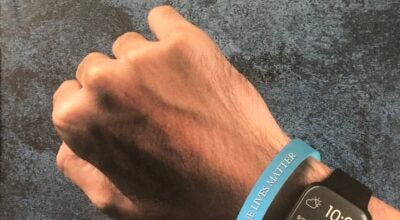Phil Hardy: A bird’s eye view — free as a bird?
Published 11:02 am Saturday, May 25, 2019
Who among us hasn’t at one time or another observed the soaring or flight of a bird and wished we could do the same? Oh, to be free as a bird and fly to wherever we want! Man has been fascinated with flight for millennia.
But is the life of a bird as carefree and casual as we might think?
Recently a friend sent me a photograph of a hummingbird that had been caught by a praying mantis at a sugar-water feeder. She wanted to know if the photo was accurate or not. I can’t say that I blame her for her pessimism in this day and time.
It is a well-known fact that praying mantises do take hummingbirds if they can catch them. Once I even had a rat snake waiting patiently at a sugar-water feeder for a hummingbird to feed. It’s not unheard of that large spiders will kill hummingbirds as well.
In nature, it’s eat or be eaten. The grasshopper is eaten by a lizard. The lizard is caught and eaten by a shrike. The shrike may in turn be devoured by a hawk … and so on. It’s the circle of life. One species perishes so that another can live and survive to hunt another day. Birds are constantly looking over their shoulder, so to speak, for danger that could spell their demise.
Last week I checked on my Purple Martins. As I opened one of the apartment doors I quickly shut it, recognizing a harmless rat snake inside. After removing the snake, I noticed how filled his body had become from birds and/or bird eggs. These things happen in nature daily, and I get it. Rat snakes are a native species.
Natural predators of birds occur in many forms: skunks, snakes, raccoons, bobcats, alligators … the list goes on and on. Unnatural causes of death to birds come from man. primarily from collisions with glass windows, buildings, windmills, power lines, vehicles, and pesticides. The second leading cause of bird mortality by mankind is from domestic and feral cats. Whether feral or pets, cats are an introduced species and are non-native. In North America it is estimated that domestic cats are responsible for between 3 and 5 billion bird deaths annually. Cats are directly responsible for the extermination of at least 33 species of birds worldwide.
The Florida Everglades receives media coverage about the non-native Burmese python that has decimated many native species of birds, mammals, reptiles. and amphibians. Yet free-roaming and feral cats pose a much more dangerous threat to our native wildlife worldwide.
My readers know I usually end my monthly column with the reminder to keep your cats indoors where they belong. Responsible pet owners do so. If you love your feline, protect it from poisons, vehicles, dogs, coyotes, and other dangers. And what better time to keep your cats indoors than right now? Baby birds are fledging and are helpless against killers like cats.
Many of my friends and neighbors have outdoor cats that they see nothing wrong with their actions. Yet when one is hit by a car or comes home all beat up from a brawl and requires a veterinarian’s attention they bellyache and complain. I can explain it to you but I can’t understand it for you. At least think about it.
On another note the Rosalynn Carter Butterfly Trail held its annual symposium earlier this month in Plains. Again this year it was a sold out event. If you aren’t familiar with this worthy cause, the trail exists to help pollinator species like the Monarch Butterfly which has been in serious decline in recent years. Both individuals and businesses can participate. To become a member, go online and register your garden. Registration is free and only takes a couple of minutes. Trail members plant nectar and host plants that directly benefit butterflies. But hummingbirds, another pollinator, benefit also.
And speaking of hummingbirds — many people tell me they are seeing Ruby-throated Hummingbirds again now that these tiny flying jewels have returned to North America. If you enjoy feeding hummingbirds, let me remind you of the correct sugar water formula. Dissolve four parts water to one part granulated sugar and add to your feeder. Remember that the hot weather we experience here in the South will cause the sugar water mixture to quickly ferment and turn rancid. Change your sugar water mixture every few days and wash your feeder thoroughly before refilling with fresh mix. I personally like to hang my feeders in the shade. This seems to help the mixture from spoiling so rapidly.
Enjoy our native birds, and remember to keep your cats indoors where they can’t kill our wildlife.
Phil Hardy, a bird watcher and bird photographer, lives in Americus.



